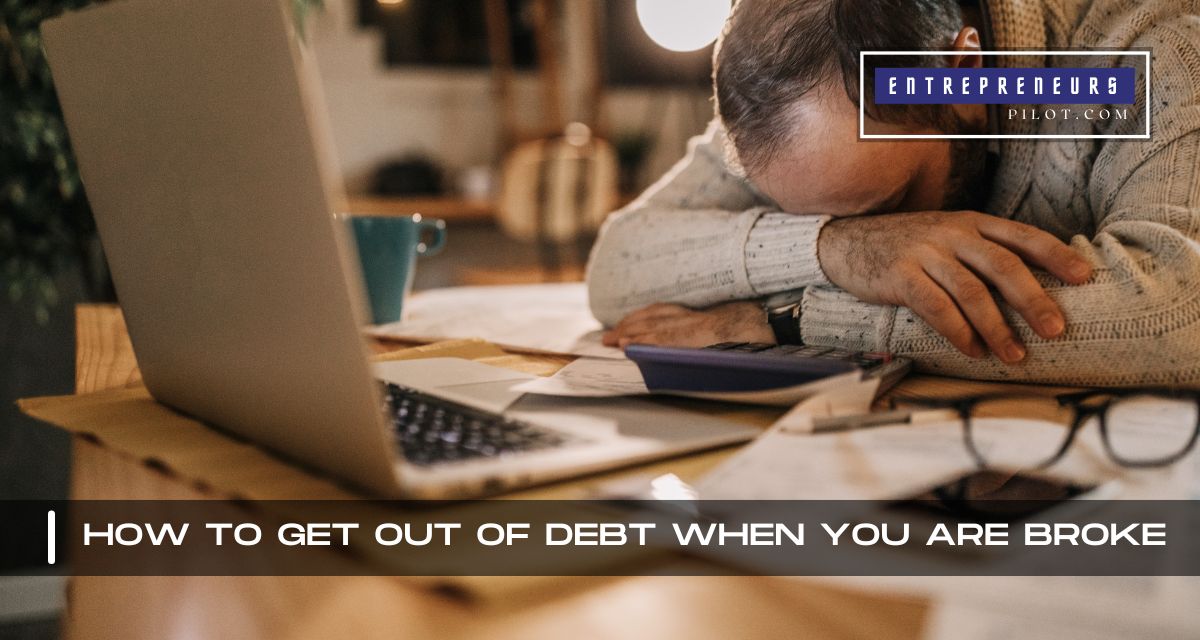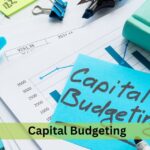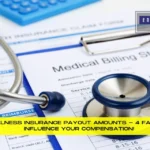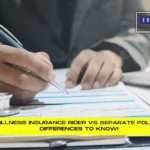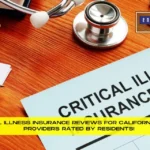How To Get Out Of Debt When You Are Broke. Finding yourself mired in debt while already broke can feel like being stuck in quicksand. The harder you struggle, the deeper you sink. When you’re financially strapped and emotionally drained, it might seem like there’s no way out. But, hold on; hope is not lost. With focused efforts and a disciplined approach, you can dig yourself out of this financial rut. Here are some life-saving tips for getting out of debt even when you’re broke and feel trapped.
Table of Contents
- Accept the Reality and Own Your Situation: Before you can solve a problem, you need to acknowledge it fully. You’re broke, you’re in debt, and that’s a tough spot to be in. But owning the problem is the first step toward a solution. Make a complete list of all your debts, including amounts, interest rates, and minimum payments. The numbers might be scary, but they are crucial for planning your way out.
- Prioritize Your Essentials: When money is tight, you need to focus on the bare necessities—food, shelter, utilities, and transportation. Cut out all non-essential expenses. No more dining out, no premium cable packages, and no impulse shopping. You need every cent to break free from your financial shackles.
- Talk to Your Creditors: Most people don’t realize that creditors are often willing to negotiate. They would rather get some money than none at all. Explain your situation, ask for reduced interest rates, or request more extended payment terms. You might be surprised at how much they’re willing to work with you.
- Create a Bare-Bones Budget: You’re going to need a stricter budget than you’ve ever had before. Allocate your income to the essentials first, then use whatever is left over to tackle your debt. Make minimum payments on all your debts and use any extra money to pay off the debt with the highest interest rate first.
- Seek Alternative Income Streams: Being broke usually means your primary source of income isn’t enough. You’ll need more. Freelance gigs, part-time jobs, and selling unused items are quick ways to boost your income. Focus on tasks that can get you immediate payment to fuel your debt repayment strategy.
- Emergency Fund vs. Debt: While paying off debt is crucial, an emergency can throw you off your plan and make you incur more debt. Even a modest emergency fund of $500 can be a lifesaver in preventing further debt when unexpected expenses arise.
- Be Accountable: Find a debt repayment buddy or use social media groups to keep yourself accountable. When you have to report your actions and progress to someone else, you’re more likely to stick to your plan.
- Consult a Financial Advisor or Credit Counselor: If you feel entirely lost, consult a professional. They can offer advice tailored to your specific situation and may even negotiate with creditors on your behalf.
- Forgive Yourself and Move On: You’re going to face setbacks. That’s almost guaranteed. What’s important is how you handle these setbacks. Don’t spiral into a pit of guilt or self-pity. Regroup, adjust your strategy, and keep moving forward.
- Celebrate Small Wins: Finally, remember to celebrate your small victories. Did you pay off a small loan? That’s a win. Did you resist the urge to make an impulse buy? Another win. These small wins keep you motivated on your journey to financial freedom.
You might be broke, and you might be in debt, but you’re not broken. With the right mindset and a well-executed plan, you can overcome your financial hardships and start living a life free of debt. It’s going to be a tough road, but the destination is well worth the journey.
- For Expert Financial Insights And Guidance, You Can Visit Our Sister Site – ArabsGeek.com Now!
- Curiosity Piqued? Dive Into the Most Captivating Financial Content by Visiting Our Homepage!
- Unlock Exclusive Business Opportunities! 🚀 Connect with Us Now at our Email: [email protected]!
How To Pay Off Debt When You Are Broke
It may seem as though you’re trapped in a never-ending cycle of financial despair if you’re struggling to make ends meet and are buried in debt. You’re not alone, and there is a way out, I assure you. Being debt-free when you’re poor isn’t just a pipe dream; it’s totally doable with the appropriate plan and a strong dose of willpower. You might be thinking, “I can hardly pay my bills; how can I think about paying off debt?” at this point. The solution is to fully comprehend your financial status before taking deliberate action to address that looming debt.
List all of your debts first on a piece of paper or in a spreadsheet that you have opened. There is no sugarcoating; simply the truth. Although knowing who and how much you owe can bring about a somber type of clarity, it’s the first step toward regaining your financial freedom. Focus now on finding extra sources of income, such as a side business, freelancing, or even selling old things from your attic. Even if it sounds cliche, every dollar matters. Use only the debt repayment portion of these additional profits.
A budget is essential. Reduce the fat anywhere you can: reduce your cable package, stop eating out, and use generic products. While it might not be much, the money you save can be used to pay off debts. Think about the avalanche or snowball debt repayment strategies. The avalanche technique goes after high-interest loans, saving you money over the long run, while the snowball method tackles the smallest debt initially, offering you psychological wins that keep you motivated.
Consult a credit counseling organization if it becomes too burdensome for you. They can give you a new point of view and even bargain with creditors. Sometimes the issue goes beyond money and involves obtaining better terms for your current loans.
The road to financial independence is a marathon, not a sprint, so keep that in mind. The key to success is to maintain consistency and motivation. Keep going back to the reason you started this adventure. Before long, you’ll be waking up to a debt-free existence that is rich with options. Roll up your sleeves and let’s start reducing that debt mountain; you can do it!
How To Get Yourself Out Of Debt
Finding a way out of debt can seem like an impossibly difficult task, especially if your monthly obligations keep mounting up. However, hang in there—there is light at the end of this financial black tunnel. The secret to regaining financial freedom is a methodical, well-thought-out strategy paired with unwavering dedication. So how do you escape this financial quicksand and re-establish your footing? Here is your manual.
Get a clear understanding of your financial landscape before anything else. Write down every debt you have, including the interest rate, the amount owing each month, and the due dates. Make a budget that fairly represents your income, necessary spending, and extra cash that can go toward paying off your debt. Clarity is your friend in this situation because it enables you to determine how deep the hole is and what you need to do to escape it.
The next step is to examine your budget and identify places where you may make savings. You can forgo your daily cappuccino, your premium streaming service that you hardly ever use, or those impulse purchase that you end up forgetting about a week later for the benefit of your financial stability. Your debts should be paid off using the money you save. The more you can reduce back, the faster that debt amount will decrease.
Here, debt repayment plans might serve as your route map. Think about strategies like the Debt Avalanche, where you target loans with the highest interest rates to reduce long-term expenditures, or the Debt Snowball, where you pay off smaller debts first for rapid psychological benefits. Consider the benefits and drawbacks of each approach carefully before selecting the one that best suits your personality and way of life.
If you’re feeling overwhelmed, think about getting outside assistance. Certified credit counselors can provide priceless guidance and even bargain with creditors to reduce your interest rates or lengthen your payment periods. However, exercise caution and exercise careful agency selection because the last thing you need is to fall victim to fraud.
Keep in mind that getting out of debt is only a journey. Setbacks are inevitable, but don’t let them stop you. Keep your sights on the prize: a life free from never-ending payments and exorbitant interest rates. Celebrate minor triumphs along the way and keep in mind that each payment is a step closer to financial freedom. Although it won’t happen overnight, you’ll succeed if you work hard and are committed. And I assure you that the freedom you’ll experience will be worth every effort you put in today.
How To Get Out Of Debt In A Year
Breaking free from debt in just a year may seem like a Herculean task, but it’s entirely achievable with meticulous planning, discipline, and a no-nonsense approach. With the clock ticking, you can’t afford to take half-measures. Here’s your action-packed roadmap to liberate yourself from the chains of debt in 365 days.
Step One: Know Thy Enemy. Gather all your debt details—credit cards, loans, medical bills, everything. List them down along with their respective interest rates, due dates, and minimum payments. This is your financial battlefield; you need to know every nook and cranny to emerge victorious.
Step Two: Supercharge Your Budget. Strip your budget down to the bare essentials. This is wartime; luxuries must go. Your Netflix subscription, weekend getaways, and even that gym membership you barely use should be eliminated or put on hold. Every dollar saved is a soldier in your debt-fighting army.
Step Three: Snowball or Avalanche? Pick your repayment strategy. The Snowball Method focuses on the smallest debt first and works up, building momentum. The Avalanche Method zeroes in on high-interest debt to save money in the long run. Choose wisely; time is of the essence.
Step Four: Find Extra Money. A year is not a long time to eliminate debt, so you need all the financial firepower you can muster. Think part-time gigs, freelancing, selling unused items, or even leveraging a skill. All extra income should be deployed directly to obliterate your debt.
Step Five: Negotiate Like a Pro. Contact your creditors and negotiate for lower interest rates or more manageable payment terms. Most will prefer to receive some payment rather than none at all. This can fast-track your journey to debt freedom.
Step Six: Monitor and Adjust. Each month, review your progress. Did you hit your targets? If not, find out why and adjust your tactics. Be agile and willing to pivot your strategy based on your actual performance.
Step Seven: Keep the Momentum. Celebrate your small wins, but don’t lose sight of the bigger picture. Keep yourself motivated through visual reminders of what a debt-free life would look like—be it a dream vacation, a new home, or simply peace of mind.
Final Step: Victory Lap. Once you’ve wiped out your debt, give yourself a pat on the back. You’ve accomplished something monumental. But remember, the goal is not just to get out of debt; it’s to stay out. Take the lessons learned during this intensive year and apply them to build a robust financial future.
There you have it—a one-year plan to break free from debt. It won’t be easy, but when you’re raising a toast to your newfound financial freedom 365 days from now, you’ll know it was worth every sacrifice.
How To Get Out Of A Lot Of Debt
Finding yourself buried under a mountain of debt can be a crushing experience, but believe me, it’s not a life sentence. There’s a path to financial freedom, even when the debt seems overwhelming. However, it requires strategic planning, relentless focus, and a determination to change your financial habits for good. So, how do you dig yourself out of this monetary pit? Here’s a comprehensive guide.
Step 1: Face the Reality
Begin by listing every single debt you owe, no matter how big or small. Include credit cards, student loans, mortgages, car loans, and even money borrowed from friends or family. Include the interest rates, monthly payments, and due dates for each. This is your financial wake-up call, the stark reality you have to confront to make any meaningful progress.
Step 2: Create a Realistic Budget
Your budget is your financial blueprint. Allocate every dollar you earn to specific expenses, savings, and most importantly, debt repayment. This isn’t the time for vague estimations; you need a detailed, down-to-the-penny plan that accounts for all your income and outgoings.
Step 3: Trim the Fat
Eliminate non-essential expenditures to free up more money for debt payments. Say goodbye to cable subscriptions, fancy dinners, and any other luxuries that aren’t critical to your survival. Make it a game if you have to—challenge yourself to live on the bare minimum for a few months and watch how much you can save.
Step 4: Tackle Debt Strategically
Choose a debt repayment strategy like the Debt Avalanche (highest interest rates first) or the Debt Snowball (smallest debts first). Both approaches have their merits; the best one for you depends on whether you’re looking for quick emotional wins or long-term financial efficiency.
Step 5: Boost Your Income
To expedite your debt repayment, consider generating additional income through part-time jobs, freelance gigs, or selling unused items. Any extra money should go directly toward debt reduction, significantly accelerating your journey to financial freedom.
Step 6: Seek Professional Help
If the debt is too overwhelming, don’t hesitate to seek help from a credit counseling agency. They can offer personalized advice and even negotiate with creditors on your behalf for better repayment terms. However, be sure to do your research and choose a reputable agency.
Step 7: Keep Tabs and Adjust
Regularly review your financial situation. Update your budget, keep an eye on your progress, and make adjustments as needed. Life happens, and your financial situation may change, requiring a new strategy. Stay flexible and adapt your plans accordingly.
Step 8: Don’t Lose Sight
Keep your end goal in mind and use it as motivation. Visual reminders like vision boards or financial freedom jars can keep you grounded and remind you why you’re making these sacrifices.
Getting out of a lot of debt won’t happen overnight. It’s a grueling process that tests your willpower and financial discipline. However, with a concrete plan and unwavering commitment, you can turn your financial life around. Trust me, the peace of mind and opportunities that come with being debt-free are worth every sacrifice you’ll make along the way.
Can I Get Out Of Debt On My Own?
Absolutely, you can get out of debt on your own, and the journey can be incredibly empowering. It’s not going to be a walk in the park, but with focus, discipline, and a carefully devised plan, you can work your way to financial freedom without external intervention. So how do you tackle this hefty challenge solo? Let’s dive in.
Step 1: Take Stock of Your Situation
You can’t solve a problem without fully understanding it. List out all your debts—credit card balances, student loans, mortgages, personal loans, etc., along with their interest rates and minimum monthly payments. This will be your baseline, the sobering but crucial foundation for your debt repayment strategy.
Step 2: Budget Like a Boss
Set up a rigorous budget that accounts for every dollar you earn and spend. Classify your expenses into ‘needs’ and ‘wants,’ and be ruthless in cutting out the non-essentials. The freed-up funds can then be channeled into debt repayment.
Step 3: Prioritize Your Debts
Choose a repayment strategy that aligns with your goals and psychological makeup. The Debt Snowball method starts with the smallest debts to create a sense of achievement, while the Debt Avalanche method tackles the highest interest debts first to save more money in the long term. The key is consistency; stick to your chosen strategy like glue.
Step 4: Find Additional Revenue Streams
The more money you can throw at your debt, the faster you’ll get out of it. Consider taking on a side hustle, freelancing, or selling items you no longer need. Your main aim should be to increase your income in any way possible, and channel these additional funds straight into debt repayment.
Step 5: Automate Payments
To ensure you don’t miss any payments, automate them. Not only does this remove the risk of human error, but it also helps you mentally as you’re less likely to divert those funds to other uses.
Step 6: Keep Yourself Accountable
Since you’re doing this solo, accountability falls entirely on you. Regularly review your finances to gauge progress. Use apps or spreadsheets to track your payments, and adjust your strategy if you find it lacking.
Step 7: Celebrate Milestones but Stay Committed
It’s essential to celebrate small wins to keep your morale high, but don’t lose sight of the bigger picture. Reaching a milestone is a sign that your plan is working, not an excuse to revert to old spending habits.
Step 8: Prepare for the Afterlife—Debt-Free Life, That Is
As you approach the finish line, start thinking about your financial goals once you’re debt-free. Whether it’s building an emergency fund, saving for retirement, or investing, having a plan for your soon-to-be-liberated finances will help you maintain your debt-free status.
Tackling debt on your own might be daunting, but it’s far from impossible. By taking a disciplined, well-planned approach, you can conquer your debt and gain invaluable skills and self-knowledge in the process. Once you’re on the other side, you’ll find that the journey, tough as it was, equipped you with the financial acumen and confidence to take on any monetary challenge that comes your way.
What To Do When You Are Broke And In Debt?
Being broke and in debt is a harrowing emotional and financial situation, but it’s not a dead-end. While the road to financial recovery will undoubtedly be tough, it’s navigable. Here’s a hands-on guide to help you regain control of your finances even when you’re pinching pennies.
Step 1: Don’t Panic, Prioritize
Your first emotion might be to panic, but that won’t help. Breathe. Prioritize your debts based on necessity. Rent, utilities, and basic food expenses come first; everything else, like credit card debt and loans, will have to wait.
Step 2: Assess Your Financial Wreckage
Take a brutally honest look at your finances. List all your debts along with interest rates and due dates. Now, examine your income and essential expenses to understand exactly how much money you’re working with. This information is vital for formulating a budget.
Step 3: Craft a Lean Budget
Create a no-frills budget that covers only essential expenses like rent, utilities, and basic groceries. You’re aiming for survival here, so non-essential expenditures like dining out, entertainment, and shopping sprees need to be slashed.
Step 4: Negotiate, Negotiate, Negotiate
Pick up the phone and talk to your creditors. Explain your financial situation and ask for options like payment deferrals, lower interest rates, or more manageable repayment plans. You’d be surprised at how accommodating some creditors can be when you’re upfront and honest with them.
Step 5: Scrounge for Extra Cash
When you’re broke, every dollar counts. Consider selling items you don’t need or taking on a temporary gig or freelance work. Don’t discount small money-making opportunities; even a modest inflow can help keep you afloat.
Step 6: Explore Community Resources
Many communities offer food banks, utility assistance, and other forms of help for those in dire financial straits. Don’t let pride stop you from taking advantage of these resources; they can be a lifeline.
Step 7: Tackle Debt with Every Spare Cent
Any extra money you find or earn should go towards paying down your debts. Use the Debt Snowball or Debt Avalanche method to pay off debts systematically. It won’t happen quickly, but every little bit helps.
Step 8: Keep the Long-Term Picture in Mind
It’s easy to get lost in the stress and immediacy of being broke and in debt, but try to maintain a long-term perspective. This situation, however grim, is temporary. Your actions today are stepping stones to a more stable financial future.
Step 9: Emotional Self-Care
Don’t underestimate the emotional toll of financial stress. Reach out to friends and family for emotional support, engage in free stress-relief activities, and consider talking to a mental health professional if it all gets too overwhelming.
It may feel like you’re caught in an endless financial storm, but remember, the darkest hour is just before the dawn. With discipline, ingenuity, and a never-give-up attitude, you can break the cycle of debt and poverty. Trust the process and take it one day at a time; each step you take, however small, is progress.
I’m Broke And In Debt What Do I Do?
Don’t give up even when being broke and in debt makes you feel like you’re stuck in a financial swamp. Although the situation is challenging, it is not the end of the road. With a combination of doable actions and mental toughness, you can still struggle your way back to financial stability. Here is your strategy:
Step 1: Take a breath and assess
It’s simple to descend into panic, but it won’t get you anywhere. Inhale deeply, grab a pen and piece of paper, and begin assessing your financial condition. List all of your debts, regular expenses, and income sources.
Step 2: Focus on the Fundamentals
You should limit your spending to the necessities in your current financial situation: food, shelter, utilities, and minimal transportation. Even if your Netflix or gym memberships are fantastic, they aren’t helping you pay off your debt. Delete them.
Step 3: Start a Conversation with Your Creditors
Get in touch with your creditors to go over your choices before your debts become too much to handle. Be honest about your circumstances; you might be qualified for short-term hardship programs, reduced interest rates, or deferred payments.
Step 4: Create a strict spending plan
Create a basic budget with debt repayment as a top priority now that you are aware of your commitments and resources. It ought to serve as a guide for how to spend each and every dollar that is given to you.
Step 5: Look Around for Extra Money
Investigate possibilities for generating extra revenue. This could entail finding a side job, freelancing, or selling any unwanted stuff. Every additional dollar should be used to pay down debt or other necessary obligations.
Step 6: Obtain community support
Don’t neglect local services intended to assist those who are struggling financially. These services, which range from food banks to low-cost medical facilities, might offer a cushion when you’re struggling to make ends meet.
Step 7: Focus on high-interest debt first
If you have several debts, pay off the ones with the highest interest rates first if possible. The Debt Avalanche approach, a strategy, reduces the amount of interest you’ll accrue over time.
Step 8: Maintain Accountability
Accountability is essential because you’re battling this problem alone. To keep track of your earnings, expenses, and debt repayments, use spreadsheets or budgeting software. Review your budget frequently and make any required adjustments.
Step 9: Look after your mental well-being
Being penniless and in debt can be a crippling emotional burden. Take part in easy, cost-free activities to reduce stress, such as going for a walk, speaking with a friend, or using mindfulness techniques.
Step 10: Keep the big picture in mind
Although this is a difficult time, it is not where you want to end up. Keep your long-term objectives in mind and draw strength from them. Remember that your sacrifices now are laying the foundation for a future with more financial security.
Being broke and in debt is a test of character, but it’s also a chance to reset your financial priorities and routines. You can get through this storm and come out the other side stronger and wiser if you put in focused work, make thoughtful choices, and have a little tenacity.
Is It Hard To Get Out Of Debt?
The amount of debt you have, your income, your financial obligations, and even your mental fortitude can all affect how tough it is to get out of debt. It’s safe to say, then, that for the majority of people, getting out of debt is a difficult process that takes a strong dedication and well-thought-out tactics. This is why it’s challenging but not impossible:
01. Mental Toll: The mental and psychological strain that being in debt causes is among the most difficult consequences. It might be frustrating to always worry about paying bills and making ends meet.
02. Interest Rates: High interest rates can give the impression that you are moving slowly along financially while exerting a lot of effort. If the loan is not paid off right away, the interest’s compounding nature causes it to grow enormously.
03. Budgetary Restraints: In order to get out of debt, it is frequently necessary to make considerable modifications to your lifestyle and spending patterns. This could require giving up things or activities you enjoy, which could be a difficult transition emotionally and practically.
04. Income Variance: Making monthly payment plans is more difficult if your income is inconsistent. This discrepancy can derail even the most carefully thought-out budget.
05. Accountability: The burden of duty falls entirely on your shoulders when you are working to eliminate your debt on your own. It might be challenging to remain committed to your goals in the absence of any outside incentive.
06. Costs that Aren’t Expected: Life frequently throws curveballs. Your repayment plans could be derailed by an unforeseen medical issue or auto repair, making it more difficult to follow your plan.
07. Long-Term Commitment: Repaying your debts may take months or even years, depending on their amount. This extended time frame may demotivate you and make the procedure appear overwhelming.
Despite these difficulties, it’s important to keep in mind that many people have managed to escape debt and restore financial security. The independence and peace of mind that come with being debt-free are immeasurable rewards, but the journey needs preparation, discipline, and the willingness to make difficult decisions. You can break the cycle of debt and build the foundation for a stable financial future with regular effort, financial education, and possibly a little luck.

